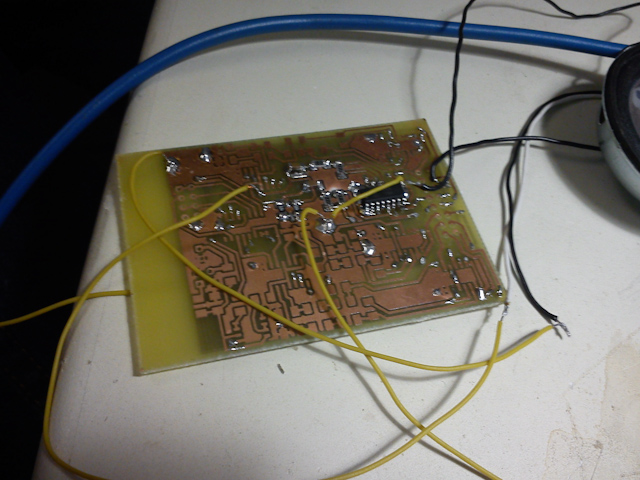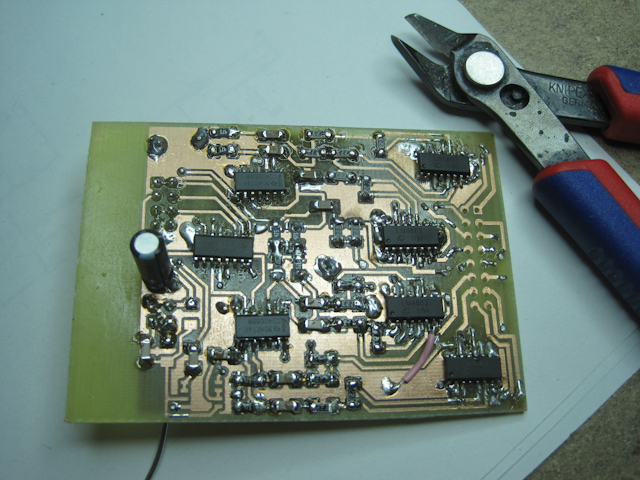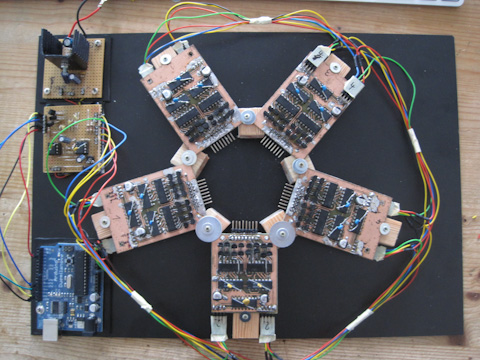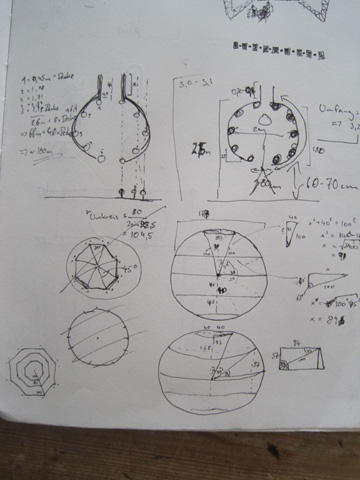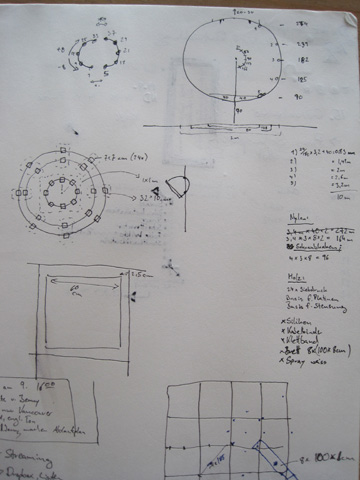Some months went by since I last updated on the state of my [Diskokugel] project. It might seem a never-ending story this one, but rest assured, I am getting there.
In the last months I started working on some of the more tedious tasks such as cutting, crimping and soldering connectors to 100 speakers and then mounting them into the framework. Then I started assembling them but thought better of it. At the moment I am missing a PCB that does the pre-amplification of the audio as well as converting the Arduinos signal voltage levels (0-5V) to those of the rest of the circuit (+/-6V). Such a circuit already exists, of course, but not in a format that would fit in my construction. Realizing how much cables actually have to be connected inside the Diskokugel, I decided not to assemble it temporarily because it would take ages to disassemble it again. So you will have to wait until I got around to design that PCB and ordered it.
Until then these 2 images will have to do:




